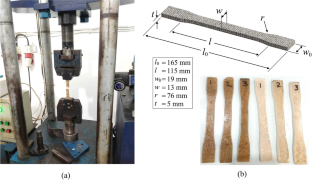A Comparative Study of the Static and Dynamic Characteristics of Jute and Glass Fiber-Reinforced Polyester Composites
Abstract
Natural and synthetic fiber-reinforced composites are currently being applied in practically every engineering subfield. Therefore, this study was conducted to compare the static and dynamic behaviors of composite materials produced using jute and glass fiber-reinforced polyesters. This was achieved by evaluating their static mechanical parameters such as elastic modulus, tensile strength, flexural strength, and critical buckling load. Impulse Excitation Method (IET) was also used to determine the dynamic elastic and shear modulus as well as the damping performance of the composite under dynamic response. The results showed that the tensile strength of glass fiber-reinforced polyester (GFRP) was 38.19% higher than the jute fiber-reinforced polyester (JFRP). Meanwhile, both composites had comparable mechanical properties such as almost the same flexural strength. The IET tests conducted also showed that the dynamic shear modulus and damping performance of both composites had a similar level of effectiveness. This means non-destructive tests such as the IET test can be used to determine the properties of a composite board quantitatively as well as to monitor the structural integrity of the board and the quality of its fabrication.


 求助内容:
求助内容: 应助结果提醒方式:
应助结果提醒方式:


